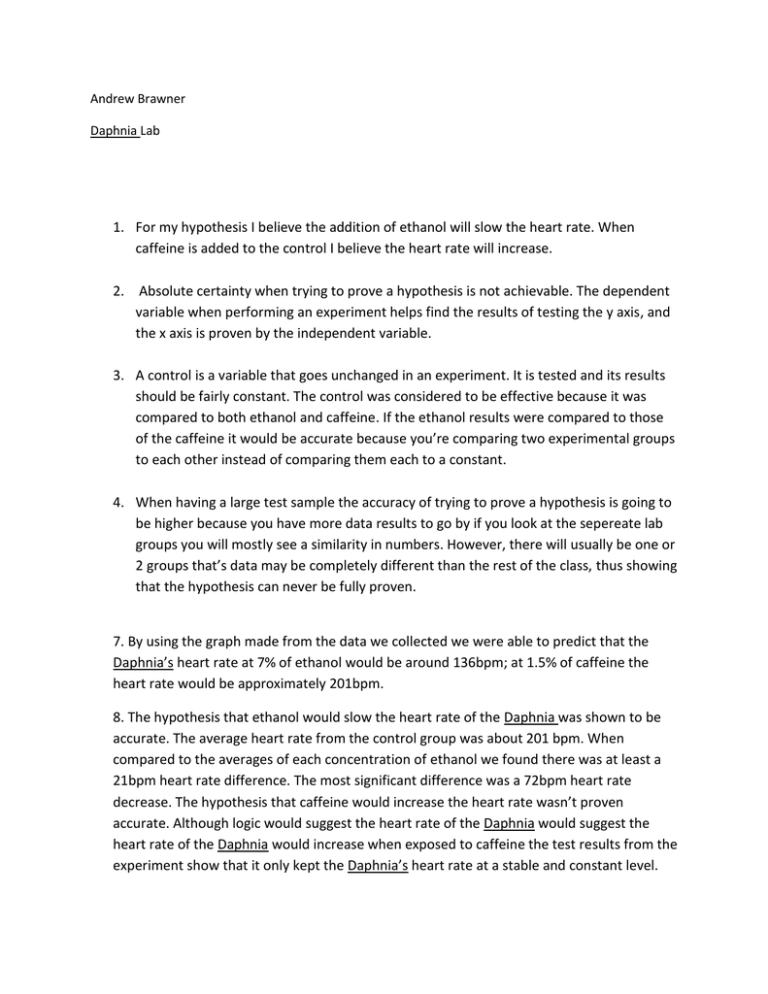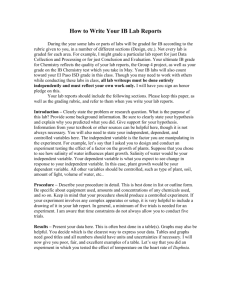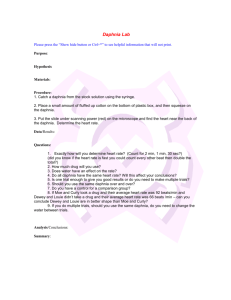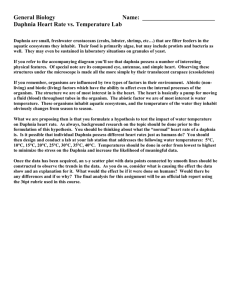Daphnia Lab (Biology Human Focus)
advertisement

Andrew Brawner Daphnia Lab 1. For my hypothesis I believe the addition of ethanol will slow the heart rate. When caffeine is added to the control I believe the heart rate will increase. 2. Absolute certainty when trying to prove a hypothesis is not achievable. The dependent variable when performing an experiment helps find the results of testing the y axis, and the x axis is proven by the independent variable. 3. A control is a variable that goes unchanged in an experiment. It is tested and its results should be fairly constant. The control was considered to be effective because it was compared to both ethanol and caffeine. If the ethanol results were compared to those of the caffeine it would be accurate because you’re comparing two experimental groups to each other instead of comparing them each to a constant. 4. When having a large test sample the accuracy of trying to prove a hypothesis is going to be higher because you have more data results to go by if you look at the sepereate lab groups you will mostly see a similarity in numbers. However, there will usually be one or 2 groups that’s data may be completely different than the rest of the class, thus showing that the hypothesis can never be fully proven. 7. By using the graph made from the data we collected we were able to predict that the Daphnia’s heart rate at 7% of ethanol would be around 136bpm; at 1.5% of caffeine the heart rate would be approximately 201bpm. 8. The hypothesis that ethanol would slow the heart rate of the Daphnia was shown to be accurate. The average heart rate from the control group was about 201 bpm. When compared to the averages of each concentration of ethanol we found there was at least a 21bpm heart rate difference. The most significant difference was a 72bpm heart rate decrease. The hypothesis that caffeine would increase the heart rate wasn’t proven accurate. Although logic would suggest the heart rate of the Daphnia would suggest the heart rate of the Daphnia would increase when exposed to caffeine the test results from the experiment show that it only kept the Daphnia’s heart rate at a stable and constant level.







